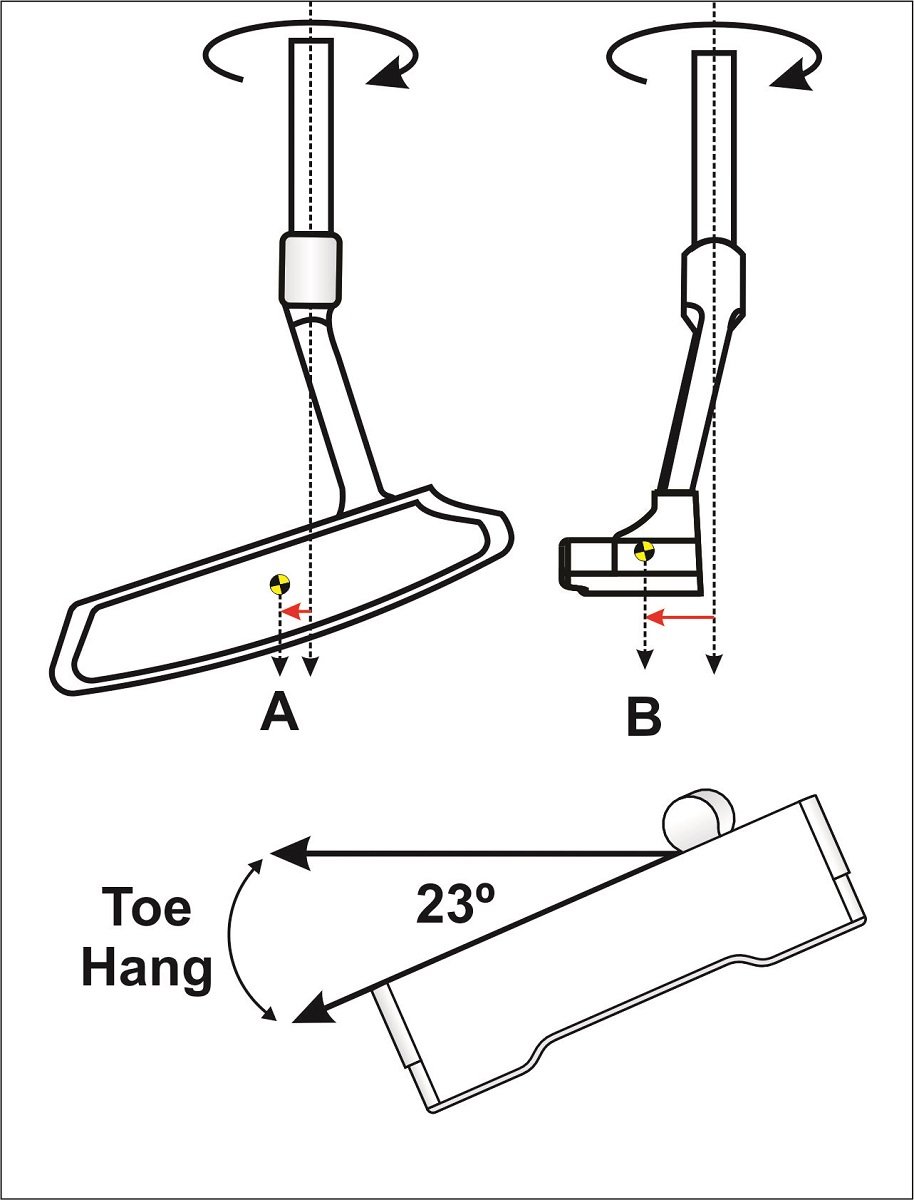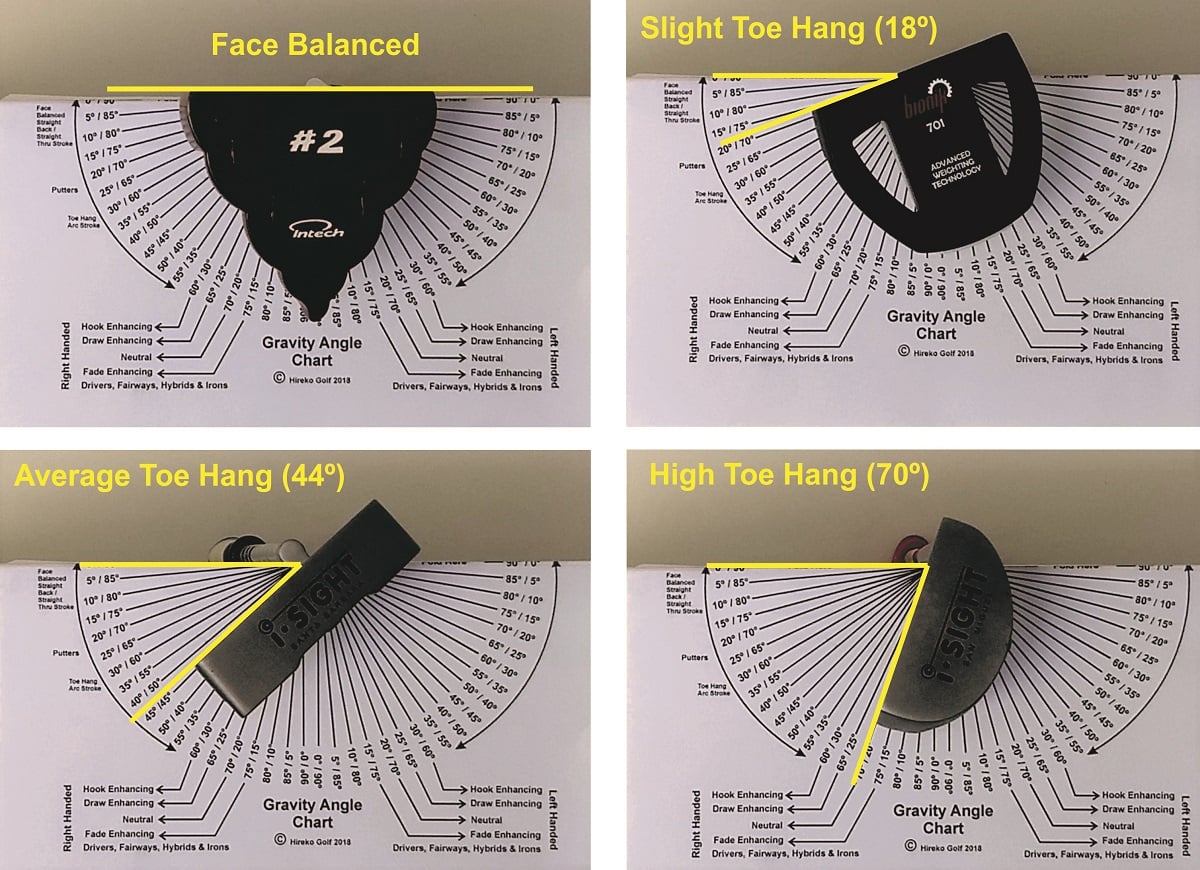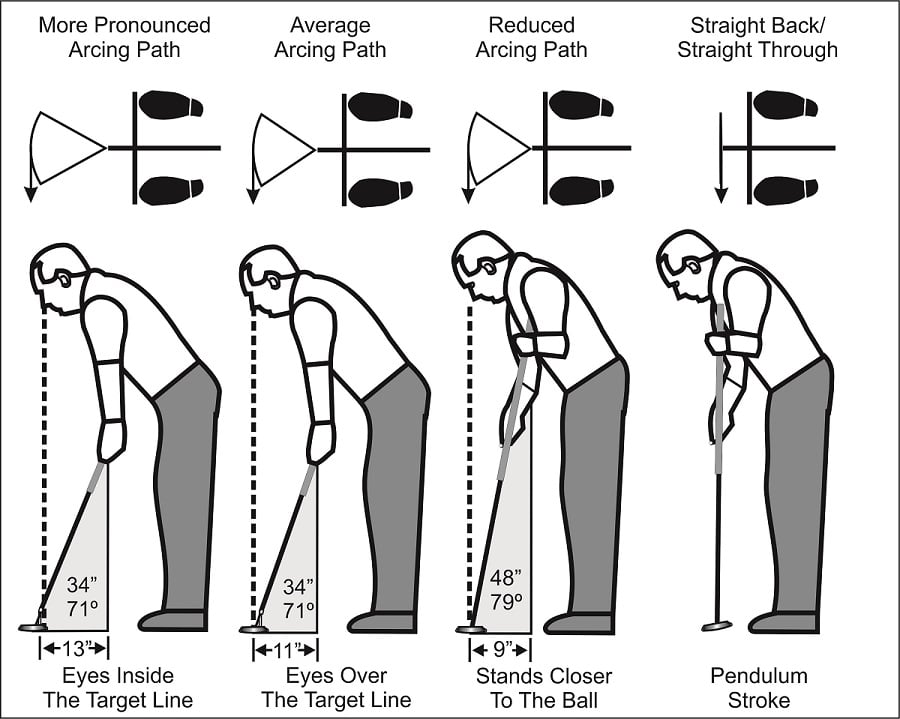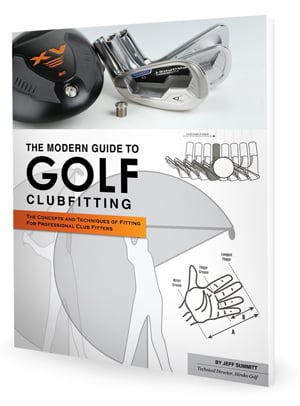Understanding and Measuring Putter Toe Hang
Over the past couple of years, much has been talked about the relationship between putter toe hang and selecting the right putter based on their path. Before we get to that we first need to understand what putter toe hang is as well as how to measure it. Perhaps you walked past a bunch of putters that were laying on a table or lying on a rack and noticed that the engravings on the sole were at all various positions.
Putter Toe Hang Explained
There is a good reason for that as the putter can rotate freely along the shaft's axis. This diagram shows what causes toe hang (also referred to as gravity angle). Dimension A in our diagram is the center of gravity (or CG) offset of the head from the center line axis of the shaft in the heel-to-toe direction. The other dimension B is the CG offset of the head from the center line axis of the shaft in the face-to-back direction.
In our example dimension (A) is 0.29" and dimension (B) is 0.66", then the toe will hang 23°. By moving the position of the hosel closer to the center of the face or more toward the heel, or forward or rearward we can adjust the toe hang. To make the putter face balance, the axis of the shaft will pass through the center of gravity in either the A or B plane or both. If in the rare occasion the A-axis would pass on the toe side of the center of gravity, then this would create a putter which would have a heel hang.
We can break down each of the putters into various categories; the significance will come later. A face balanced putter is where the face is parallel to the ground when the putter is rested horizontally on a surface and the head allowed to hang over an edge like a table top. Most face balanced putters are mallets which are center-shafted or have a compound double bend shaft where the upper axis of the shaft intersects the center of gravity of the head. In recent years, manufacturers have made mallet designs that feature a slight to hang by moving the shaft closer to the heel.
The most popular putters are blade models with a Plumber’s neck hosel. They will typically have a toe hang of 30° to 45° degrees depending upon hosel length and distance the neck is from the heel. Putters that exhibit a large amount of toe hang are heel-shafted.

Hireko has made a handy chart so you can accurately measure the toe hang of any putter. And watch our how-to's video to learn more about putter toe hang.
Download the Putter Toe Hang chart here
Matching Putter Toe Hang to Putting Path
There are three basic classifications for describing a putter's path. These are commonly referred to as straight back – straight through stroke (or SBST for short), a slight arc and a pronounced arcing path. And each type suggests a different amount of putter toe hang complements the path for best results. The SBST stroke is somewhat misleading. To explain why, look at the far-right diagram below.

To have the putter going straight back and forth either requires the putter to be perpendicular to the ground or requires the golfer to manipulate the face with their hands during the stroke. Putters have a lie angle built in which causes us to stand a certain distance from the ball. The more upright or the more center shafted the putter is, the closer we stand to the ball. Some golfers prefer to putt with their eyes inside the target line (or ball) which causes the putter to be further away from the body. The further the putter is from the hands will create a more pronounced arcing path. To understand how that works hold your putter at a 45° angle and take a putting stroke. The arc will be much greater than when the putter head becomes closer to your feet.
A heel-toe weight Plumber’s neck blade has been the best-selling putter style. The toe hang on this style putter usually averages around 35° and coincidently most golfers have a slight arcing path. Golfers who have a pronounced arcing path or more of an exaggerated inside-square-inside stroke generally prefer heel-shafted putters, which will have a large amount of toe hang (60° and higher).
To find out what style putter best complements your putting stroke instead of fighting it, take at least one putter in each category and roll a few putts from 15-20 feet on the practice green. You should see a pattern.

For more information on putter toe hang, consult the Modern Guide to Golf Clubfitting book, chapter 15
For a related article that shows the importance of the gravity angle on swing clubs, go to this link below.
Understanding and Measuring Gravity Angle on Golf Clubs
